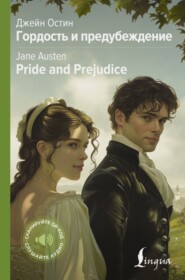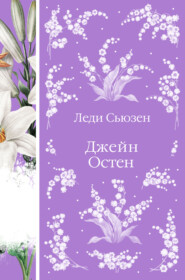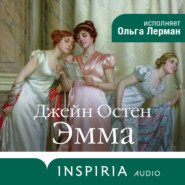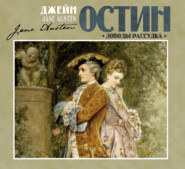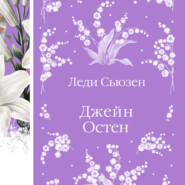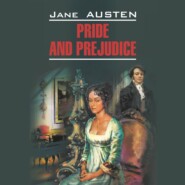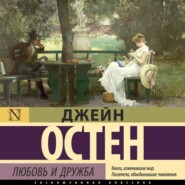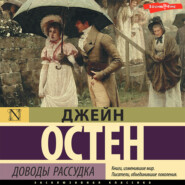По всем вопросам обращайтесь на: info@litportal.ru
(©) 2003-2025.
✖
Northanger Abbey
Настройки чтения
Размер шрифта
Высота строк
Поля
Northanger Abbey
Jane Austen
To coincide with the launch of The Austen Project an ebook collection of Jane Austen’s timeless novels.‘Northanger Abbey! These were thrilling words, and wound up Catherine's feelings to the highest point of ecstasy.’Considered the most light-hearted and satirical of Austen’s novels, Northanger Abbey tells the story of an unlikely young heroine Catherine Morland. While staying in Bath, Catherine meets Henry Tilney and his sister Eleanor who invite her to their family estate, Northanger Abbey. A fan of Gothic Romance novels, naive Catherine is soon letting her imagination run wild in the atmospheric abbey.A coming-of-age novel, Austen expertly parodies the Gothic romance novels of her time and reveals much about her unsentimental view of love and marriage in the eighteenth century.
Contents
Cover (#ub59a875f-9294-5d85-83af-2e16f1c52e6a)
Title Page (#u4c7d113d-42e7-587e-b17f-8fd0ed41a1db)
An Introduction by Val McDermid (#u10279fcf-b973-5711-9d55-64b447f03b85)
Volume I (#u9107a0bb-8b1c-5a3f-8435-f4f9d538e13d)
Chapter 1 (#ubb6a299a-7e9e-54a7-9881-771d0a979e56)
Chapter 2 (#u89aa9140-477b-52e5-9bb7-360c282fb9df)
Chapter 3 (#u29c09e3e-6691-58dc-b3f0-a582fe9eb32f)
Chapter 4 (#ue2c4a295-5698-5674-9c72-adcc5f737695)
Chapter 5 (#uad86f24b-e14d-5d0b-88cd-c2ead9ee6dd2)
Chapter 6 (#u36a36087-c34e-5851-8d6f-3830ff7b8fe5)
Chapter 7 (#u856a14e3-5721-59b3-8c51-d4111e3834e9)
Chapter 8 (#u4e6e1e38-c663-5435-9f91-3b7643b65259)
Chapter 9 (#u9bd0166a-5ea1-5f94-a9e3-b9ab18342377)
Chapter 10 (#litres_trial_promo)
Chapter 11 (#litres_trial_promo)
Chapter 12 (#litres_trial_promo)
Chapter 13 (#litres_trial_promo)
Chapter 14 (#litres_trial_promo)
Chapter 15 (#litres_trial_promo)
Volume II (#litres_trial_promo)
Chapter 16 (#litres_trial_promo)
Chapter 17 (#litres_trial_promo)
Chapter 18 (#litres_trial_promo)
Chapter 19 (#litres_trial_promo)
Chapter 20 (#litres_trial_promo)
Chapter 21 (#litres_trial_promo)
Chapter 22 (#litres_trial_promo)
Chapter 23 (#litres_trial_promo)
Chapter 24 (#litres_trial_promo)
Chapter 25 (#litres_trial_promo)
Chapter 26 (#litres_trial_promo)
Chapter 27 (#litres_trial_promo)
Chapter 28 (#litres_trial_promo)
Chapter 29 (#litres_trial_promo)
Chapter 30 (#litres_trial_promo)
Chapter 31 (#litres_trial_promo)
Also by Jane Austen (#litres_trial_promo)
Copyright (#litres_trial_promo)
About the Publisher (#litres_trial_promo)
Introduction (#ulink_95631158-c62d-548e-b573-6f2d3425aa7e)
Northanger Abbey is the least conventional of Jane Austen’s six published novels. It’s also the least well known, which always surprises me because in some respects, it’s much closer to modern fiction than it is to the Victorian novels that succeeded it. Like the other five, it has at its heart a love story shaped by the conventions of the time. But unlike them, it goes beyond that to take a shrewd and unsparing look at the role fiction plays in our lives.
This is the novel where Austen tells us what she really thinks about her companions in the literary landscape. She takes sideswipes at those who claim fiction is a waste of time. She lambasts historians and poets alike. She upbraids her fellow fiction writers for not standing up for themselves and giving their heroines only ‘improving’ books to read. She points the finger at critics who despise the works that give pleasure to so many readers. It’s a Regency rant that wouldn’t be out of place in a twenty-first-century blog – sharp and sarcastic, she skewers those who have no time for novels or their creators.
Austen reminds us that the novel at its best is ‘work in which the greatest powers of the mind are displayed, in which the most thorough knowledge of human nature, the happiest delineation of its varieties, the liveliest effusions of wit and humour are conveyed to the world in the best chosen language’.
But that doesn’t mean she’s blind to the deficiencies of some novelists. And in this book she seizes the chance to poke fun at a whole sub-genre of her contemporaries – the gothic horror novel. At its heart, Northanger Abbey is a satire that takes apart the tropes of the gothic horror genre and exposes their ridiculous characters, their improbable narratives and their failure to reflect the lives of their readers in any significant particular. Austen has no patience for the suggestible readers who see the novel as any kind of blueprint for living.
It’s that sideways look at the effects of our reading material on the choices we make that also renders Northanger Abbey the funniest of Austen’s sly social comedies. We might not read the novels of Mrs Radcliffe and Thomas Love Peacock these days, but human nature remains the same. We all know people who live their lives convinced the zombie apocalypse is just round the corner or who place the same faith in Bridget Jones and her fellow heroines as the young protagonist, Catherine Morland, places in the reality of the horror novels she loves. And with equally unfortunate emotional consequences. The satire bites as hard now as it did at the time of writing.
One of the strengths of Jane Austen’s work is that when we reread her, she rewards the different sensibilities of our age. We find a fresh understanding of the novels because our experience of life is wider and deeper. Austen’s skill is to provide new readings of her work that chime with our greater understanding of people’s dreams and fears.
The first time I read Northanger Abbey I was an undergraduate at Oxford studying the early development of the English novel. I was seventeen – the same age as Catherine Morland, though naturally I considered myself far more mature and worldly than she is. I remember feeling some impatience with Austen’s position that a woman needed to define herself in terms of her relationship to a man – father, fiancé, husband, brother – but the one thing I had no difficulty with was accepting the notion that you could lose yourself so thoroughly in a book that it assumed a heightened reality that was much more interesting than life itself. I’d spent my teens injecting myself into the plots of novels I was reading, because my own daily grind was infinitely duller by comparison. In that respect, I totally got Catherine Morland.
Jane Austen
To coincide with the launch of The Austen Project an ebook collection of Jane Austen’s timeless novels.‘Northanger Abbey! These were thrilling words, and wound up Catherine's feelings to the highest point of ecstasy.’Considered the most light-hearted and satirical of Austen’s novels, Northanger Abbey tells the story of an unlikely young heroine Catherine Morland. While staying in Bath, Catherine meets Henry Tilney and his sister Eleanor who invite her to their family estate, Northanger Abbey. A fan of Gothic Romance novels, naive Catherine is soon letting her imagination run wild in the atmospheric abbey.A coming-of-age novel, Austen expertly parodies the Gothic romance novels of her time and reveals much about her unsentimental view of love and marriage in the eighteenth century.
Contents
Cover (#ub59a875f-9294-5d85-83af-2e16f1c52e6a)
Title Page (#u4c7d113d-42e7-587e-b17f-8fd0ed41a1db)
An Introduction by Val McDermid (#u10279fcf-b973-5711-9d55-64b447f03b85)
Volume I (#u9107a0bb-8b1c-5a3f-8435-f4f9d538e13d)
Chapter 1 (#ubb6a299a-7e9e-54a7-9881-771d0a979e56)
Chapter 2 (#u89aa9140-477b-52e5-9bb7-360c282fb9df)
Chapter 3 (#u29c09e3e-6691-58dc-b3f0-a582fe9eb32f)
Chapter 4 (#ue2c4a295-5698-5674-9c72-adcc5f737695)
Chapter 5 (#uad86f24b-e14d-5d0b-88cd-c2ead9ee6dd2)
Chapter 6 (#u36a36087-c34e-5851-8d6f-3830ff7b8fe5)
Chapter 7 (#u856a14e3-5721-59b3-8c51-d4111e3834e9)
Chapter 8 (#u4e6e1e38-c663-5435-9f91-3b7643b65259)
Chapter 9 (#u9bd0166a-5ea1-5f94-a9e3-b9ab18342377)
Chapter 10 (#litres_trial_promo)
Chapter 11 (#litres_trial_promo)
Chapter 12 (#litres_trial_promo)
Chapter 13 (#litres_trial_promo)
Chapter 14 (#litres_trial_promo)
Chapter 15 (#litres_trial_promo)
Volume II (#litres_trial_promo)
Chapter 16 (#litres_trial_promo)
Chapter 17 (#litres_trial_promo)
Chapter 18 (#litres_trial_promo)
Chapter 19 (#litres_trial_promo)
Chapter 20 (#litres_trial_promo)
Chapter 21 (#litres_trial_promo)
Chapter 22 (#litres_trial_promo)
Chapter 23 (#litres_trial_promo)
Chapter 24 (#litres_trial_promo)
Chapter 25 (#litres_trial_promo)
Chapter 26 (#litres_trial_promo)
Chapter 27 (#litres_trial_promo)
Chapter 28 (#litres_trial_promo)
Chapter 29 (#litres_trial_promo)
Chapter 30 (#litres_trial_promo)
Chapter 31 (#litres_trial_promo)
Also by Jane Austen (#litres_trial_promo)
Copyright (#litres_trial_promo)
About the Publisher (#litres_trial_promo)
Introduction (#ulink_95631158-c62d-548e-b573-6f2d3425aa7e)
Northanger Abbey is the least conventional of Jane Austen’s six published novels. It’s also the least well known, which always surprises me because in some respects, it’s much closer to modern fiction than it is to the Victorian novels that succeeded it. Like the other five, it has at its heart a love story shaped by the conventions of the time. But unlike them, it goes beyond that to take a shrewd and unsparing look at the role fiction plays in our lives.
This is the novel where Austen tells us what she really thinks about her companions in the literary landscape. She takes sideswipes at those who claim fiction is a waste of time. She lambasts historians and poets alike. She upbraids her fellow fiction writers for not standing up for themselves and giving their heroines only ‘improving’ books to read. She points the finger at critics who despise the works that give pleasure to so many readers. It’s a Regency rant that wouldn’t be out of place in a twenty-first-century blog – sharp and sarcastic, she skewers those who have no time for novels or their creators.
Austen reminds us that the novel at its best is ‘work in which the greatest powers of the mind are displayed, in which the most thorough knowledge of human nature, the happiest delineation of its varieties, the liveliest effusions of wit and humour are conveyed to the world in the best chosen language’.
But that doesn’t mean she’s blind to the deficiencies of some novelists. And in this book she seizes the chance to poke fun at a whole sub-genre of her contemporaries – the gothic horror novel. At its heart, Northanger Abbey is a satire that takes apart the tropes of the gothic horror genre and exposes their ridiculous characters, their improbable narratives and their failure to reflect the lives of their readers in any significant particular. Austen has no patience for the suggestible readers who see the novel as any kind of blueprint for living.
It’s that sideways look at the effects of our reading material on the choices we make that also renders Northanger Abbey the funniest of Austen’s sly social comedies. We might not read the novels of Mrs Radcliffe and Thomas Love Peacock these days, but human nature remains the same. We all know people who live their lives convinced the zombie apocalypse is just round the corner or who place the same faith in Bridget Jones and her fellow heroines as the young protagonist, Catherine Morland, places in the reality of the horror novels she loves. And with equally unfortunate emotional consequences. The satire bites as hard now as it did at the time of writing.
One of the strengths of Jane Austen’s work is that when we reread her, she rewards the different sensibilities of our age. We find a fresh understanding of the novels because our experience of life is wider and deeper. Austen’s skill is to provide new readings of her work that chime with our greater understanding of people’s dreams and fears.
The first time I read Northanger Abbey I was an undergraduate at Oxford studying the early development of the English novel. I was seventeen – the same age as Catherine Morland, though naturally I considered myself far more mature and worldly than she is. I remember feeling some impatience with Austen’s position that a woman needed to define herself in terms of her relationship to a man – father, fiancé, husband, brother – but the one thing I had no difficulty with was accepting the notion that you could lose yourself so thoroughly in a book that it assumed a heightened reality that was much more interesting than life itself. I’d spent my teens injecting myself into the plots of novels I was reading, because my own daily grind was infinitely duller by comparison. In that respect, I totally got Catherine Morland.










